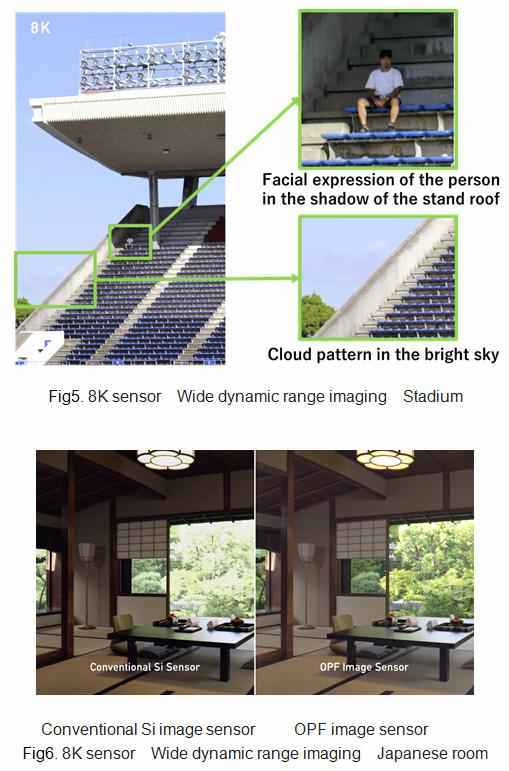Panasonic recently made a huge announcement that they have developed a new CMOS sensor with an organic photoconductive film (OPF) making it capable of producing an 8K high-resolution video at 60fps with global shutter, eliminating the dreaded “jello effect” associated with electronic shutter based sensors. The new sensor is said to have around 36 Megapixels and also feature 450k high-saturation electrons
Panasonic go on to say in their press release, that “By utilizing this OPF CMOS image sensor’s unique structure, we have been able to newly develop and incorporate high-speed noise cancellation technology and high saturation technology in the circuit part. And, by using this OPF CMOS image sensor’s unique sensitivity control function to vary the voltage applied to the OPF, we realize global shutter function.”
With the technology, it is possible to capture images at 8K resolution, even in high contrast scenes, such as a field under strong sunlight and shaded spectator seats under a stadium roof.

Moreover, by utilizing the global shutter function that enables simultaneous image capture by all pixels, it is expected to be able to capture moving objects instantaneously without distortion, be utilized for multi viewpoint cameras (performing multi-view synchronized imaging using plural cameras) and used in fields requiring high-speed and high-resolution, such as machine vision and ITS monitoring.
And if that’s not enough, Panasonic also go on to say that this new technology enables them to have an “electronically-controlled variable ND filter function” which enables stepless adjustment of the OPF sensitivity merely by controlling the voltage applied to the OPF.
This may be familiar (at least in theory) to the way the Electronic Vari-ND filters work on the Sony FS5 and FS7 II, which change by altering the voltage on the polarizing filters.
Advantages from new “Organic” Sensor Tech:
- 8K/60fps
- Global Shutter
- Switching between high sensitivity mode and high saturation mode is possible using gain switching function.
- ND filter function can be controlled via voltage applied to the “organic element”.

For those of you more technically inclined you can dive into the tech jargon here and learn more about the technology Panasonic has been developing.
Apparently this type of technology that simultaneously achieves these performances is the industry’s first, so it makes sense for Panasonic, being a serious player in the sensor making business to flex its engineering prowess.
However, what does this mean for us indie-filmmakers though right now in February 2018?

Panasonic Varicam LT 4K S35 Sensor
I guess, it will be a while before we can see this tech get implemented into a camera, and it will probably make an appearance in some sort of a high-end one, before it trickles down to the super-popular GH series Lumix mirrorless cameras. And just like that an 8K GH6 by 2020 does not seem like such a far-fetched idea afterall…
Disclaimer: As an Amazon Associate partner and participant in B&H and Adorama Affiliate programmes, we earn a small comission from each purchase made through the affiliate links listed above at no additional cost to you.
Claim your copy of DAVINCI RESOLVE - SIMPLIFIED COURSE with 50% off! Get Instant Access!




